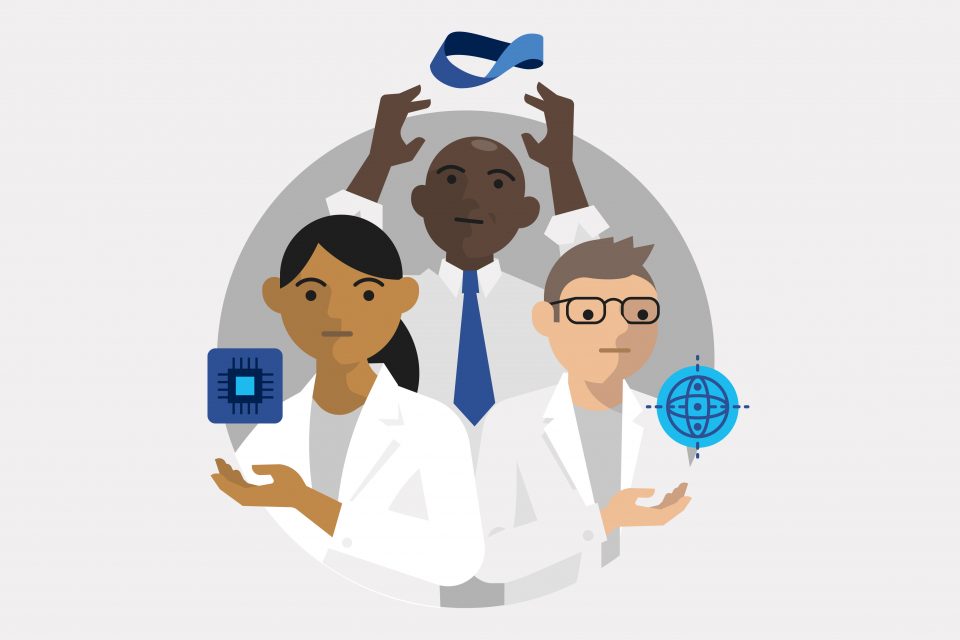By Andrea Della Mattea, President, Microsoft Asia Pacific. This article was originally posted on LinkedIn.
 Every day when I get to the office, I meet so many amazing, talented people. We brainstorm problems together, we strategize & pursue opportunities together – we go through the ups and downs of our work together. When I take a step back & reflect on the number of women alongside me in the work we do, it fills my heart with pride. As a woman, I see that we’ve come a long way.
Every day when I get to the office, I meet so many amazing, talented people. We brainstorm problems together, we strategize & pursue opportunities together – we go through the ups and downs of our work together. When I take a step back & reflect on the number of women alongside me in the work we do, it fills my heart with pride. As a woman, I see that we’ve come a long way.
I remember one of my first jobs. It was in a large sugar refinery filled with heavy machinery and processing equipment in Queensland, Australia. Out of more than 100 employees, I stood out as one of the few female employees, let alone a female engineer. That feeling of standing out wasn’t unfamiliar. There weren’t many women pursuing an engineering degree when I was in university. This was not always the case. Women once dominated the fields of Science, Technology, Engineering and Mathematics – or STEM for short. The computing industry had Ada Lovelace, the first programmer; science had Marie Curie, the first woman to win a Nobel Prize, and only woman to do so twice; mathematics had Katherine Johnson, the African-American mathematician whose calculations were critical to the success of the first American human spaceflights – the list goes on.
So perhaps we’ve come a long way, but I feel certainly not far enough.
Today, UNESCO reports that only 23% of researchers in East Asia and the Pacific are women and only 35% of all students enrolled in STEM-related fields of study are female. Microsoft’s “Closing the STEM Gap” report shared that girls today are losing interest in STEM because they believe that jobs requiring coding and programming aren’t for them. Another study found that 50% of teenaged girls surveyed in Asia Pacific are less likely to pursue STEM careers because of strong male presence.
How do we change this, to go the distance?
Inspire and influence her: be a role model
Reflecting on my earlier career, I was extremely fortunate to have some incredibly capable and influential leaders who were great role models and played an integral part in my success. Likewise, the first steps we can take to help mould future women leaders in STEM is to showcase and make accessible, positive female role models. Girls and young women who know a woman in STEM professions are substantially more likely to feel empowered when they engage in education and career affirming activities.
DigiGirlz, one of Microsoft YouthSpark’s program, gives young girls opportunities to explore careers in technology, connect with Microsoft employees, and participate in hands-on digital learning workshops. Microsoft employees across Asia have been reaching out to girls in their alma mater as part of our DigiGirlz School Connect program. They share with students their career stories, the exciting innovations in technology – all while busting the myths and misconceptions of STEM careers. On International Women’s Day last month, more than 4,400 young women took part in 56 DigiGirlz type events across 24 cities in Asia.
Ignite her passion: support the educators
The first exposure girls have to STEM is in the classroom and our teachers are often the reason most of us fell in love with what we learn in class. I’ve had amazing teachers over the years that piqued my interest in learning how things work and solving problems, imbuing in me an innate sense of curiosity that inspired me to study in engineering.
This is why I passionately believe that educators play an irrefutable role in driving students’ joy for STEM. We need to ensure that educators receive all the support they can get to do their jobs the best they can in preparing our future leaders for success in their digital economy and to cement their desire to embrace a STEM-related career.
Through our Microsoft Innovative Educator (MIE) program, we recognize the power of educators and provide the tools, knowledge and the community for educators to come together and use technology to pave the way for better learning and student outcomes.
Help her thrive: inculcating a growth mindset
I cannot begin to share the different hurdles that stand between you and success, let alone the challenges that come with being in STEM. Experiments fail, projects delay – from one day to the next the field of STEM will never cease to challenge you. But I promise, it is rewarding.
So, beyond the role models and the education, success in STEM lies also in having a growth mindset – one that is focused on continual learning and improvement, through a willingness to try, fail and inquire. At Microsoft, we know there is a need for a supportive environment where failure is not shunned, but instead learning-it-all is celebrated. The same goes to nurturing our future female leaders. Instilling this growth mindset by emphasizing more on the journey to seek out answers and the need for hard work, will help girls go further in STEM.
Answer the call
As a mother, I know that supporting and guiding children are key to their success. As a woman, I know that the support I’ve received from amazing men and women has been vital to my career. As a leader, I know that the responsibility lies on me to lead the charge in making sure our industry is accessible to all.
As we celebrate International Girls in ICT Day, I invite you to answer the call and join me in paying it forward, for the thousands of girls out there. After all, we can’t do it alone, it takes a community.
To be a part of the transformation and encourage more girls to join STEM and ICT industries, visit Microsoft Philanthropy initiatives in Asia.







